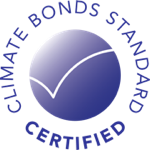| Country | State | State/Sub Category | Proxy | Brochure |
|---|---|---|---|---|
|
Australia
|
New South Wales | Single & multifamily |
BASIX Energy 40 |
|
|
Australia
|
Tasmania | Single & multifamily | Building code Australia (BCA) 2013 Within the context of RMBS transactions in Australia, Maximum Weighted Average Life can be substituted for Maximum Tenor |
|
|
Australia
|
Victoria | Single & multifamily | Building code Australia (BCA) 2011 Within the context of RMBS transactions in Australia, Maximum Weighted Average Life can be substituted for Maximum Tenor |
|
|
Australia
|
All States except Western Australia | House or apartment |
Australian Residential Rooftop Solar Proxies for the Certification of houses or apartments using solar rooftop installations Rooftop Solar Proxy Spreadsheet The Simplified Solar Rooftop Proxy is valid until June 2022. If there are any questions, please contact standards@climatebonds.net |
|
|
Australia |
All states | Residential |
Australian Residential Proxy for Green Star Homes Certified by the GBCA and comply with Renewable Energy Pathway A or B and do not include a swimming pool. Further detail is availabe here. |
|
|
Belgium
|
Country wide | Single & multifamily | Energy Performance Certificate (EPC) rating of A OR Flemish building code after 2014 |
|
 China
|
Country wide | Single & multifamily | Evaluation Standard for Green Building rating of 3 Star | |
|
Colombia |
Country Wide | Social Housing Buildings | Consejo Colombiano de Construcción Sostenible (CCCS) | |
|
Colombia |
Country Wide | Residential Buildings | Consejo Colombiano de Construcción Sostenible (CCCS) | |
|
Finland
|
Country wide | Single & multifamily |
Use E - value shown on EPC - Please refer to PDF for more details. Also, properties built after Janaury 1st 2015 qualify. The tenor of the bond is to be a maximum of 10 years. |
|
|
France
|
Metropolitan France | Single & multifamily |
New residential buildings complying with Thermal Regulation RE2020 and built with a construction permit issued after 1 January 2022 |
|
|
Germany |
Country wide | Single & multifamily | Energieausweis (EPC) rating of A OR B | |
|
Hungary
|
Country wide | Single & Multifamily |
Residential buildings in Hungary are eligible for certification if their specific primary energy consumption (Fajlagos Primer Energiafogyasztás) published on an Energy Performance Certificate (Energetikai tanúsítvány) dated after Jan 1 2016, lies below the hurdle rate established for the midpoint of the term of the bond. |
|
|
India |
Country wide | Residential | Buildings certified under the IGBC Green Homes ® Rating system v3.0. See additional information in the brochure. | |
|
Ireland
|
Coutrywide | Single & multifamily |
House or Apartment meeting trajectory requirements for CO2 emissions as shown on BER certificates.
New buildings constructed after 2015 are automatically eligible if the mid-point of the bond term is no later than 2032.
Upgrade and retrofit of asset: minimum 30% reduction in CO2 emissions, depending on tenor of bond, based on reduction in the CO2 emission figure from BER certificates.
|
|
|
Mexico
|
Country Wide | Single & Multifamily |
Ecocasa-certified residential buildings that achieve a minimum of 20% reduction in CO2e emissions against the baseline, measured using the DEEVi tool. The version of Ecocasa elegible is the current version as of 1 June 2020.
The tenor of the bond is to be a maximum of 10 years.
|
|
|
Netherlands
|
Country wide | Single & multifamily |
Post 2012: Dutch Building Decree 2012 ---------- Upgrade and Retrofit: Improvement of at least two EPC levels to at least C. Ie E > C, D > B, or C > A, correspond to at least 30% reduction in CO2 emissions |
|
|
Norway
|
Country wide | Single & multifamily |
House or Apartment: Energimerking (EPC) rating of A, B OR C Houses and Apartments: TEK (Building Code) 2017 |
|
|
Peru
|
Country wide | Social Housing Buildings | Mivivienda Sustainable Programme current 11th Version Rating Scheme | |
|
Poland |
Country wide | Single & multifamily |
Assets meeting trajectory requirements for primary energy demand
|
|
|
South Africa |
Country wide | Single & multifamily | New and refurbished residential buildings complying with SANS10400-XA standard | |
|
Spain
|
Catalonia | House or apartment |
Residential buildings in Catalonia are eligible for certification if their carbon intensity (Emissiones de CO2) published on an Energy Performance Certificate (EPC) (Qualificació Energètica) lies below the hurdle rate established for the midpoint of the term of the bond. See emissions calculator below. |
|
|
Sweden |
Country wide | House or apartment |
House or Apartment meeting trajectory requirements for CO2 emissions as shown on Energy Performance Certificates The trajectories are different depending on whether the EPC's are created before or after Version 2.6. (See PDF) |
|
|
Switzerland |
Country wide (Canton-dependent) |
|
||
 United Kingdom
|
England and Wales |
Single & multifamily Single & multifamily |
Environmental Impact (EI) rating of A or B or Emissions Intensity Target Dependent on the Tenor of the Bond as part of the Energy Performance Certificate programme | |
 United States
|
California | Single & multifamily | California building code Title 24 compliant (Updated 2022-03-23) | |
 United States
|
New York | Single & multifamily |
Multifamily housing: NYSERDA’s relevant programs (e.g. the New Construction - Housing (NC-Housing) Program) or one of New York State Homes and Community Renewal’s Clean Energy Incentive offerings. 1. Tier 3 NC-Housing 2. Carbon Neutral Ready + Health NC-Housing Additionally, any building constructed after December 2022 must not use fossil fuels for heating, hot water, cooking or on-site electricity generation other than back-up power requirements. |
|
|
International |
International |
LEED Gold OR Platinum Only able to be used where a local proxy has not been established 10 year limit on bond tenor. Date of LEED certification must be within 5 years before bond issuance |
||
|
International
|
International |
EDGE certified Only able to be used in developing countries. 10 year limit on bond tenor |
||
|
International
|
International |
Net Zero subject to confirmation of local country schemes | ||
|
International
|
International |
Living Building Challenge Certified |
See our Residential CO2 Target Calculator.
For locations where buildings emissions performance data does not exist, or is too limited to be representative of the market, the Low Carbon Building Criteria Technical Working Group has established a series of proxies. These proxies undergo extensive reviews to ensure that they are representative of buildings in-line with a zero-carbon building sector in 2050.
For issuers looking to use locally available tools, rating systems, or performance schemes as proxies for meeting the Low-Carbon Building Standard, see the Proxy Methodology document for additional guidance.
Please note if you would propose for the Certification to use a building code or rating system from your building, which is not listed in this table, then it may take the Working Group up to two weeks to evaluate whether the proposed code / system may be used for Certification.
The tool below calculates the performance (i.e. carbon intensity) target a property asset should achieve in order to be eligible for Climate Bonds certification under the Residential Property criteria.
An equivalent calculator is also available for Commercial Property CO2 Target Calculator.
The tool calculates the performance target based on three factors:
- the city’s baseline performance (the top 15% of the market),
- the year the bond is issued, and
- the term of the bond.
The first factor is based on data Climate Bonds has collected while the second and third factors are set by the user by sliding the two buttons along the bar at the bottom of the horizontal axis of the chart.
The user can view the city’s baseline performance by hovering over the starting point of the 2050 zero-carbon trajectory line on the chart.
We welcome questions or feedback on the tool.
Climate Bonds would like to thank Flux for their support without which this body of work would not have been possible.






















